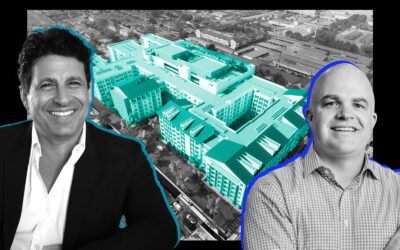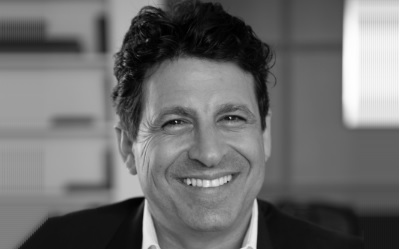DOWNTOWN LOS ANGELES – From parks and schools to apartment buildings and office high-rises, two documents — the city Zoning Code and neighborhood-specific Community Plans — regulate every detail of what can and cannot be built in the city. The problem is, both rulebooks are badly outdated.
Now, those two guides for growth are about to get major updates. The implications for Downtown Los Angeles in particular will be huge.
On Tuesday, June 11, the City Council approved a $5 million, five-year contract with Austin-based Code Studio to lead a rewrite of the zoning code, the set of building and planning laws that is supposed to implement Los Angeles’ 35 Community Plans. The code has not been overhauled since 1946.
Back then the code was a 46-page pamphlet. Over the past 67 years, lawmakers have enacted reams of ordinances and special area-specific guidelines. Now, the zoning code is a disjointed, 600-page book of complicated municipalese.
Many of the core rules were codified just after WWII, when city planners would not have considered that L.A. might one day have a subway system, a desperate need for affordable housing, or want to encourage residential growth and recreational access along the Los Angeles River.
The first manifestation of the code reform process is a new city website, recode.la, that launched last week. People can submit ideas and stay informed about public meetings.
In July, officials will start the update of the Downtown Community Plan, which has not been modernized since 2003. The separate but parallel initiative will also draw heavily from community input.
While the verbiage can sound complicated, think of the community plan as a visionary document: It might emphasize a desire for a particular land use in a neighborhood — say more creative office space in the Arts District. The zoning code is the technical document that implements and enforces the goal. When they conflict, the code generally wins out.
This has proved problematic in Downtown, where some land-use rules conceived in 1946 no longer make sense. For example, the zoning code dictates that new hotels require a conditional use permit, which triggers a lengthy approvals process that can discourage interest from a builder. That is antithetical to Downtown circa 2013, as the city is now trying to encourage hotel growth in the area.
Or, take the Arts District, where some areas zoned for industrial operations with heavy mechanical uses would still allow a slaughterhouse. Given the neighborhood’s evolution into a residential hub, said City Planning Director Michael Logrande, heavy operations may no longer be compatible. That could be reflected in a new code, he said.
Downtown Goes First
The city doesn’t anticipate having its new zoning code until 2018, because rewriting the document will require extensive outreach to the myriad distinct neighborhoods that comprise Los Angeles.
Downtown, however, won’t have to wait as long.
The first two years of the process will focus on overhauling the part of the document that deals specifically with Downtown. Logrande said that stems in part from the fact that the Central City is already a development hub, and is best positioned to take advantage of a new code that encourages smart growth.
“We think Downtown has the most potential for economic vitality and growth for the future and we wanted [zoning code reform] to be a catalyst, to work with the market forces that are so strong,” Logrande said.
The primary objective of code reform is to amend the rules so it is easier for a developer to build the types of projects that stakeholders in an area want and harder to build projects that conflict with the updated Community Plan, Logrande said.
In the land-use world, the easiest projects are the ones that are “by right,” because they follow all the existing rules and don’t need special permissions known as variances from the city council. Developers of by-right projects can skip the Planning Department and bring plans straight to the Building and Safety Department for construction permits.
Developments that require a variance are called discretionary projects because they are subject to the approval of elected officials, who often use their power to influence a project’s scope, design or impact on an area.
Last year, there were more than 1,200 applications for discretionary approvals, which Logrande said is evidence that the exceptions have swallowed the rules.
“Many times we’re requiring discretionary processes on things that should be as a matter of right,” he said.
Logrande offered the example of a Downtown pizza parlor that wants to serve beer and wine. Today, that’s a discretionary approval and comes with a long and expensive timeline. If Downtown stakeholders want to encourage more restaurants that sell alcohol, a new zoning code could make that by right, he said (though it would still be subject to state alcohol licensing regulations).
Power Struggle
Many developers, architects and others involved in real estate development have long lamented the city’s complex approvals and permitting process, which can involve sign-offs from up to 12 agencies. That’s why the city is also restructuring permitting and inspection functions into a new Department of Planning and Development. Logrande will helm the department that will merge the Planning and Building and Safety departments and other development uses.
While the cumbersome process has long been the target of criticism, many of the roadblocks to entitling a project start with the zoning code.
“Every project that pencils out from an investment point of view is going through some sort of discretionary process,” said Will Wright, director of government affairs for the Los Angeles chapter of the American Institute of Architects. “That discretionary process becomes political.”
If the zoning code makes more projects by-right, elected officials will have less influence on approvals and development in general, said Joel Miller, a principal at consulting and engineering firm Psomas. It would also mean less work for land-use attorneys and “fixers” who developers pay to lead their projects through the City Hall maze.
“I think what’s happening politically is, as a result of term limits, many of the city council members are more receptive to these types of changes and are relinquishing some of their land-use powers to allow projects to happen by right,” Miller said.
Ultimately, how the new zoning code and community plan shape up will depend largely on public input. The process will involve hundreds of community meetings, with consultants and city officials studying the ways in which the current code conflicts with modern ideas about growth and planning.
Code Studio, which has helped rewrite zoning codes in cities including Denver, Raleigh and Fort Lauderdale, will work on the Los Angeles update with 15 specialized subcontractors, including seven local firms. The work is not only about reconciling the past with the present, said Craig Lawson, president of land-use consulting firm Craig Lawson and Co. He noted that the vision held by today’s community stakeholders and elected officials will need to work a decade from now, and beyond that.
“Zoning code reform will help us to move forward on projects that match what are the priorities of the city right now such as hotels, residential, mixed-use and some of the entertainment uses the city wants in Downtown,” Lawson said. “But what if the priority changes?”
The first Downtown meeting to discuss the zoning code plan is scheduled for 6-8 p.m. on July 9 at the Ronald F. Deaton Civic Auditorium in the Police Administration Building, at 100 W. First St.
Source: Los Angeles Downtown News

